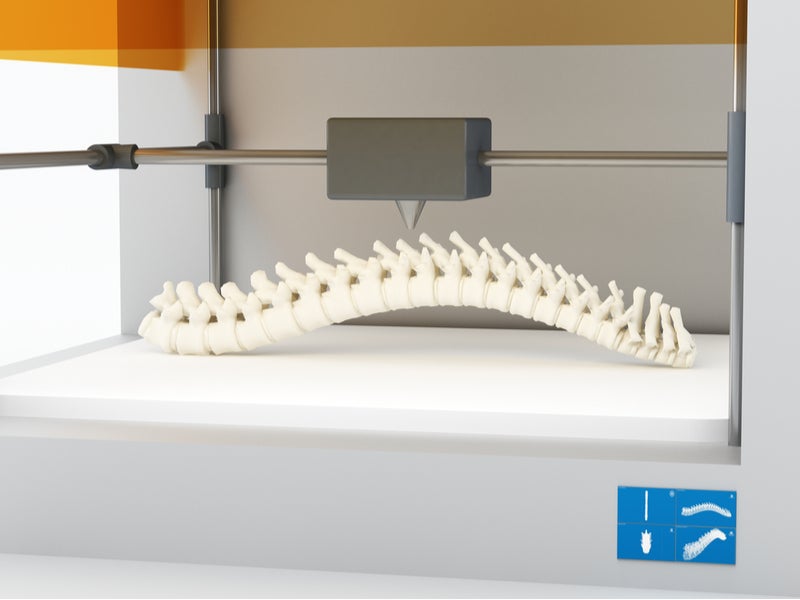Since its inception in 1984, 3D printing has come a long way. Although it makes up less than 1% of the global manufacturing market, the industry is on an upward curve, with confidence in the technology currently greater than perhaps at any other time in its history.
Listed below are the major milestones in the history of 3D printing in healthcare, as identified by GlobalData.
1839 – Formulation of Cell Theory: realisation that cells are the building blocks of life
1978 – Stem cells discovered
1984 – Invention of 3D printing with Charles W (Chuck) Hull filing US patent number US4575330 A, for Apparatus for Production of Three-Dimensional Objects by Stereolithography
1988 – Bioprinting first demonstrated by 2D micro-positioning of cells
1988 – First commercial 3D printer developed by Chuck Hull, founder of 3D Systems

US Tariffs are shifting - will you react or anticipate?
Don’t let policy changes catch you off guard. Stay proactive with real-time data and expert analysis.
By GlobalData1996 – Dr. Gabor Forgacs, founder of Organovo, observes that individual cellular aggregates can be arranged through observations of embryonic development
1998 – Biologist James Thompson developed the first human stem cell lines
1999 – Research team from Wake Forest Institute created the world’s first lab-grown organ (bladder tissue) that was successfully implanted into a patient
2000 – Medical field begins using 3D printing
2000 – EnvisionTEC launches the first commercially available extrusion-based bioprinter, the 3D-Bioplotter
2001 – 3D printed synthetic scaffold for human bladder cultivation achieved
2003 – First inkjet bioprinter is developed by modifying an HP standard inkjet printer
2003 – Wake Forest Institute first to create a functional solid organ experimentally: a miniature kidney that secretes urine
2004 – Dr. Forgacs engineered 3D tissue with only cells and no scaffolds
2006 – Dr. Shinya Yamanaka receives Nobel Prize for discovering that mature adult specialised cells can be reprogrammed back into a stem cell state, confirming that cellular differentiation is not unidirectional
2008 – The first 3D printed prosthetic leg is created
2009 – First blood vessels are 3D bioprinted by Organovo
2012 – In situ bioprinting realised on animals
2012 – 3D printed jaw manufactured by LayerWise
2014 – Organovo created the first commercially available 3D human liver tissue, ExVive Liver
2014 – Allevi launches the Allevi 2, the first desktop bioprinter
2015 – FDA approval of the first and only 3D printed tablet, Spritam, by Aprecia Pharmaceuticals
2018 – Poietis announced the first commercial launch of a 3D bioprinted full human tissue model Poieskin, and launched its 4D bioprinting systems
2019 – First 3D heart with network of blood vessels capable of contraction bioprinted by scientists at Tel Aviv University
2019 – Jordan Miller, founder of Volumetric, and his colleagues 3D bioprinted a lung-mimicking air sac and surrounding blood vessels
2020 – FabRx launched M3DIMAKER, the first 3D printer for the manufacture of personalised medicines
This is an edited extract from the 3D Printing in Healthcare – Thematic Research report produced by GlobalData Thematic Research.






